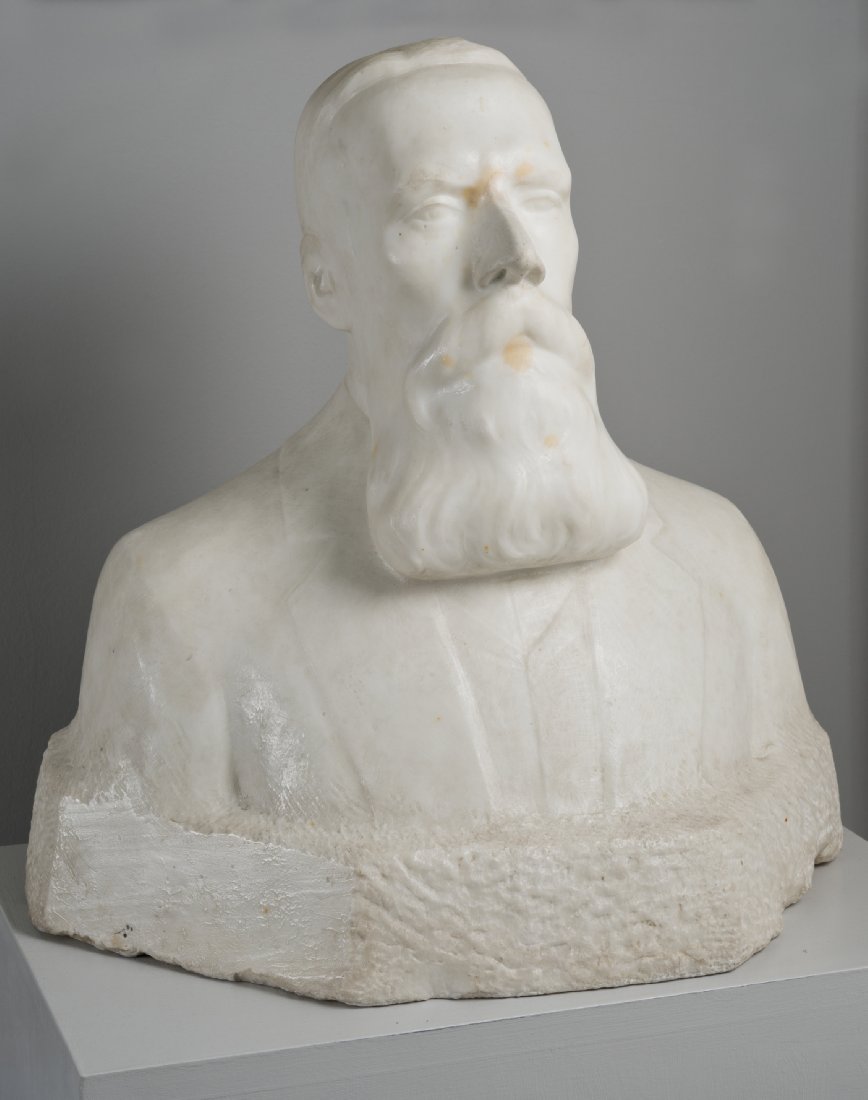Edward Wittig (1879–1941) was a Warsaw sculptor who enjoyed great popularity not only in Poland, but also in France. In the years 1897–1900 he studied at the Academy of Fine Arts in Vienna, and from 1900 at the School of Fine Arts in Paris.
In these leading centers, the learning in the early, youthful period of his creativity yielded works in which Impressionistic–Symbolic–Secessionist tendencies clashed with the artist‘s natural inclination to depict Tektonic–Classical imagery.
In the second, mature period of Wittig‘s activity, which fell between 1908 and 1914, he freed himself from direct imitation of nature in favor of its idealistic stylization, aimed at “achieving the greatest possible harmony of consciously constructed forms“.
The third and final period of the artist‘s creative work (1914–1941), known as the “era of heroic monument sculpture“, began with his return to Poland and settling in Warsaw, where he became a professor at the School of Fine Arts and the Architecture Department of the local Polytechnic. Numerous orders for monumental sculptures led him to resign from teaching.
In 1921 he became the General Commissioner of the Polish Art Exhibition in Paris, and in 1926 a Corresponding Member of the Académie des Beaux–Arts Institut de France in Paris. For voluntary participation in the fights of 1920, he received the Cross of Valor, and for his artistic activities in Poland the Commander‘s Cross of the Order of Polonia Restituta and the French Officer‘s Cross of the Legion of Honor.
The image of Edward Alexander Raczyński depicts him in the prime of his life, when as a long–time chairman of the Kraków Society of Friends of Fine Arts, and also as an outstanding collector, he enjoyed an undisputed authority in matters of art.
The sculpture dates from Wittig‘s transition to the position of “new classicism“, of which he was the most eminent Polish representative. The portrait of Edward Alexander, like the sculptures created since 1908, is characterized by a calm, compact structure with balanced statics, fluid lines and a smooth elaboration of the signals reduced only to the necessary details of the costume. This is in line with the official character of the sculpture, which was undoubtedly ordered with the intention of placing it in an exposed place in the Rogalin Gallery, built by the portrayed in 1910.


